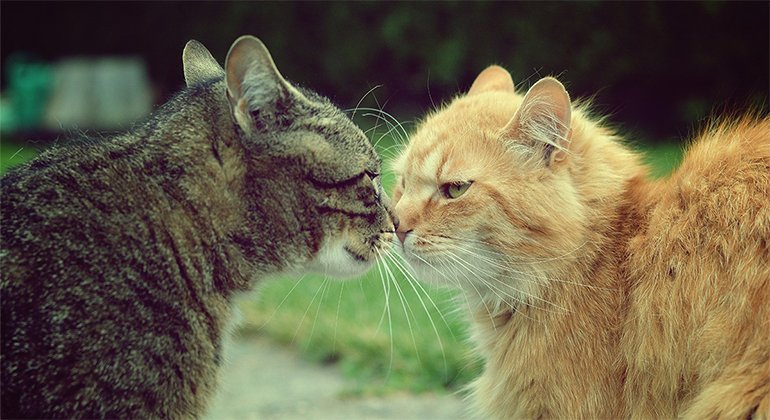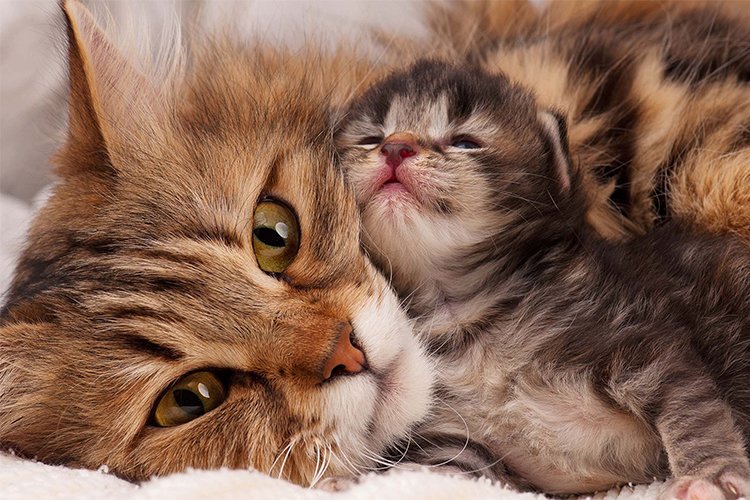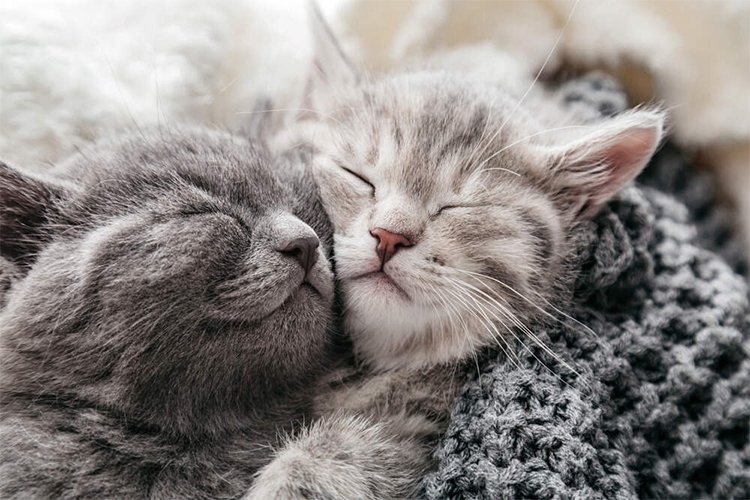- Beauty & Skincare
- Fashion
- Food And Drinks
- Health & Care
- Home & Garden
- LifestyleExplore stories and advice on living your best life. From personal growth to entertainment, dive into the latest in lifestyle trends and inspiration.
- Travel
- Beauty & Skincare
- Fashion
- Food And Drinks
- Health & Care
- Home & Garden
- LifestyleExplore stories and advice on living your best life. From personal growth to entertainment, dive into the latest in lifestyle trends and inspiration.
- Travel
Now Reading: Introducing a kitten to an older cat
-
01
Introducing a kitten to an older cat
- Beauty & Skincare//
- Fashion//
- Food And Drinks//
- Health & Care//
- Home & Garden//
- Lifestyle//Explore stories and advice on living your best life. From personal growth to entertainment, dive into the latest in lifestyle trends and inspiration.
- Travel//
Introducing a kitten to an older cat

Friendly, single adult cats may have difficulty adjusting to living with a new kitten. Older cats often appear sad, withdrawn, hiss a lot and sometimes even stop eating or start urinating in strange places if they are not getting used to the new family member well.
These behaviors occur because cats don’t like change, especially when it affects their established territory. Bringing a kitten together with an adult cat can cause a lot of stress in your household, but there are some things you can do to make the reunification go more smoothly.
Preparation is key to successfully introducing a new kitten to your older cat. Preparing your cat for the new arrival and making the changes seem less drastic will make him more likely to adjust to his new roommate. Setting up new bowls and objects for the kitten in advance is an important step, and setting boundaries for both cats will make adjustment easier. Overall, you should give yourself (and your older cat) enough time to prepare for this transition with these steps.
Calm your senior cat
Pheromones are useful for creating a calm environment for any cat. The weeks before a new kitten arrives are a good time to take advantage. Diffusers, sprays and wipes are available and will help your cat relax without the use of medication. Try to use pheromones for at least a few weeks before bringing home a kitten.
If you suspect your older cat is becoming stressed and anxious with a new kitten, consider supplements designed to calm the cat. These will not anesthetize your pet but will help them stay calm and relaxed. They usually work best when given several weeks before the expected stressful event and can be continued after the new kitten arrives. Ingredients typically include L-theanine, phellodendron, magnolia, whey or milk proteins, and other natural ingredients proven to be safe and effective for pets.

Your veterinarian is an excellent resource for recommending safe and effective calming supplements. There are a lot of “soothing products” out there these days. Check with them before giving your pet any supplements to make sure it’s worth the time and money!
Get your home ready
New items for your kitten, such as food bowls, beds, another litter box, and toys, should be placed in and around your home before the kitten comes home. Start putting these items in their new place about a week before the new arrival so your adult cat can smell them and get used to all the new things. If possible, try to include items that already have the kitten’s scent on them. Make sure you are ready for the kitten. If you are stressed and unprepared, your older cat will notice and have a negative impact.
Designate a small room, such as a bathroom, where your new kitten can retreat and spend the first week or so. Your older cat should be able to get to the door of this room to hear and smell it, but not have no interaction with the kitten. Place the kitten’s belongings (such as a litter box and food bowls) in this room, along with a toy that belongs to your older cat.
Cats are typically stressed by limited access to resources. Resources include food, water, litter boxes, prime seating, and yourself. There should be a litter box for each cat as well as an additional litter box, and these boxes should be located throughout the home. Cats typically don’t want to come into contact with other cats when trying to access a resource. So keep this in mind when placing resources throughout the home. Remember, it’s a good idea to start using pheromones and calming supplements before making any changes in your home, as this process alone has been known to cause stress-related illnesses in cats.
Prepare your senior cat
Make sure your senior cat is healthy. Adding stress to an unhealthy cat will only make things worse, and you want your cat to be not only mentally prepared for a new kitten, but also physically ready to handle it. Have your cat examined by your veterinarian to make sure he is healthy and up to date on vaccinations. Respiratory diseases are common in kittens. You should therefore make sure that your older cat’s immune system is armed against anything that comes into the house. If scratching or biting occurs between cat and kitten, you should also make sure your cat’s rabies vaccination is up to date.

It is also important to know your cat and kitten’s feline leukemia (FeLV) and feline immunodeficiency virus (FIV) status before introduction. Your veterinarian can assist you with recommended tests that should be performed before introducing a new cat into your home.
Although older cats occasionally adapt to a new kitten right away, they usually need some time to adjust to the changes. Sometimes cats never fully accept a new kitten, but simply live together and stay away from the other cat in the house. You want to make sure that things stay peaceful and that you have the best chance of building a budding friendship right from the start, no matter how your cat feels about the new kitten.
The introduction
When you bring your kitten home, let him sniff it while it is in the carrier. Go straight to the room you previously designated for the kitten and let it explore. The litter box, food bowls, bed, and some toys should all be easily accessible. Do not allow your older cat immediate access to the kitten.
At night, when you are not home and you cannot supervise the kitten and your older cat, keep the kitten in its designated room with the door closed. When your cat becomes curious, he may stick his paw under the door, sniff under the door, and listen to the kitten. Do this for about a week. Don’t forget to give your senior cat plenty of attention after playing with your kitten. It needs your attention and support, and the kitten’s smell on your clothes will help it get used to the newcomer. Just be sure to wash your hands between play sessions to avoid spreading infection.
Encourage time together
After about a week, let your kitten explore the house under your watchful eye. Let your older cat observe this exploration and retreat if she wants. Don’t force interaction between your cat and kitten. If your cat has a favorite interactive toy like a feather wand or laser pointer, try playing with both cats at the same time. This will encourage mutual activity. You can also give them both treats at the same time and feed them from separate bowls at the same time. Make sure there is enough space between food bowls so that your older cat doesn’t feel threatened.
Encourage all positive interactions between your older cat and the kitten through praise, treats, and physical affection. You want your cat to associate the kitten with happy, positive things.
Allow your older cat to set boundaries
Cats need order and a new member of the house needs to learn the rules. Your older cat may try to set boundaries with the new kitten for a while, hissing and hitting at the kitten when the newcomer does something untoward. This is completely normal and as long as it’s just hissing and clapping, try not to interfere. Your older cat is teaching the kitten what the new cat’s limits are.
Problems and proofing behavior
They may never become best friends, but most cats learn to accept and occasionally appreciate the presence of another feline roommate. Don’t give up if the first encounters don’t go well. Older cats may take some time to adjust to a younger cat. A common mistake is to rush socialization between cats and then get angry or frustrated when it doesn’t work. Remain calm and work gradually to bring the cats together. Try to time your interactions and increase the amount of time you spend together slowlygladly. If your older cat is particularly aggressive toward the new kitten, talk to your veterinarian or a behavior specialist for tips.
























